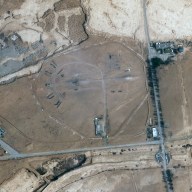Last week’s LRT traffic signal hiccups at 111 St. and 51 Ave. — which saw automobile drivers waiting upwards of 20 minutes to make a left-hand turn because of the coming and goings of the trains — got me to thinking about how other cities have avoided similar problems.
In Calgary’s downtown core, for example, these types of headaches are minimized by having the LRT stop at red lights just like any other vehicle. Drivers still have to wait for the train to clear the intersection before they can turn left, but usually only for a few seconds.
The Calgary approach isn’t perfect by any means, of course — obviously, it has the counterproductive effect of dramatically slowing down the LRT. The C-Train’s usual top speed of 80 km/h outside the city core is halved to a top speed of 40 km/h when it’s downtown. Actual speeds, most of the time, are even slower.
Vancouver’s SkyTrain avoids the traffic snarls altogether. This is possible because the SkyTrain (as the lofty name suggests) is on an elevated track, and thus circumvents interactions with roadway traffic.
Predictably, convenience comes at a price: Elevated LRT like the SkyTrain typically costs about 40 per cent more to build than street-level LRT. When a project already costs billions of dollars, this translates into a price premium of a least hundreds of millions of dollars — not exactly easy money to scrounge up.
It’s perhaps Curitiba, Brazil, however, that has one of the most interesting approaches to running an LRT system: It doesn’t have one.
The bustling Latin-American city, with a metro area population of more than 3 million people, distinguishes itself as being one of the only major cities in the world without an LRT, monorail, or subway.
Unexpectedly, Curitiba also has the highest rates of transit ridership rates in Brazil (nearly 85 per cent). It also boasts some of the lowest per capita levels of fuel consumption in its country, and the cleanest air of any major Brazilian city.
This amazing feat is accomplished via housing development planning that is extremely transit-oriented, along with innovative roadway designs and an enormous fleet of articulated (i.e. accordion) buses.
Together, these three things allow Curitiba to flexibly and inexpensively deliver a level of Bus Rapid Transit (BRT) that rivals even the best subway systems — and without any LRT-induced traffic snarls.
With talk of further LRT extension in Edmonton rampant; it may well be that effectively planned BRT can be a cheaper and more practical alternative in some cases.
– Bryan Saunders is a local transit advocate and a strong supporter of initiatives to decrease dependence on private vehicles.
















